User engagement is all about getting the attention of visitors.
Sadly though, the average attention span of humans has dropped to just 8.25 seconds– taking a toll on website engagement as well.

Image Source: The Tree top
Everyone who owns a website or an online platform knows how important it is to increase user engagement. We understand that having a website is just the first step, but keeping visitors engaged and coming back for more is what really counts. And we are here to help you with that.
Think about it, every time someone visits your site; they’re essentially saying, “I want to know more about you, your brand, and what you have to offer.”
And as website owners, it’s our responsibility to make sure that their experience is nothing short of amazing.
But we also know that it’s not easy to keep visitors engaged; that’s why in this post, we’ll be sharing nine proven strategies that will help you to increase user engagement and keep your audience coming back for more. From creating compelling content to using popup tools, we’ll cover it all.
So, whether you’re a blogger, business owner, or online marketer, you’ll find valuable information in this post. We want to help you to create a website that your visitors will fall in love with.
Are you ready to create an emotional connection with your audience and boost your user engagement? Let’s get started!
What Is User Engagement?
User engagement, in its simplest form, is the level of interaction and involvement that visitors have with your website or online platform. It’s how interested and invested they are in what you have to offer.
It’s all about making a connection with your audience and keeping them engaged with your content.
When visitors are engaged, they’ll spend more time on your site, interact with your content, and, hopefully, convert into customers. On the other hand, when they’re not engaged, they’ll quickly lose interest and leave your site.
Think of user engagement as a conversation between you and your visitors. The more interesting and valuable the conversation, the more likely they’ll stick around and continue to engage with your content.
It’s important to remember that user engagement is not just about getting visitors to your site; it’s about keeping them there and making sure that they have a positive experience.
So, whether you’re a blogger, business owner, or online marketer, remember user engagement is key to the success of your online presence!
How to Analyze User Engagement, and Why Is It Important?
Analyzing user engagement is all about understanding how your visitors interact with your website or online platform. It’s about understanding what they like, what they don’t like, and what they’re looking for.
And it’s vital to the success of your online presence because it can give you valuable insights into how to improve your site and keep your visitors engaged.
So, how do you go about analyzing user engagement? There are a few key metrics that you can use to track engagement on your site, such as:
- Time on site: This metric tells you how long visitors are spending on your site. If they’re spending a long time on your site, it’s a good indication that they’re engaged with your content.
- Bounce rate: This metric tells you the percentage of visitors who leave your site after only viewing one page. A high bounce rate can indicate that your visitors aren’t finding what they’re looking for or that your site is not engaging enough.

Image Source: Usebouncer
- Scroll depth: This metric tells you how far down the page your visitors are scrolling. If they’re scrolling all the way to the bottom, it’s a good indication that they’re engaged with your content.
- Click-through rate: This metric tells you the percentage of visitors who are clicking on links or buttons on your site. A high click-through rate can indicate that your visitors are engaged and interested in what you have to offer.
But why is user engagement important?
User engagement is important because it directly impacts your bottom line. When visitors are engaged, they’re more likely to convert into customers. They’ll spend more time on your site, interact with your content, and ultimately, be more likely to make a purchase or take another desired action.
Additionally, engaged users are more likely to become loyal customers and promote your brand through word-of-mouth marketing.
On top of that, user engagement is also important because it helps you to understand your audience better. It can give you valuable insights into what they’re looking for and what they’re interested in.
This can help you to create content and products that will resonate with your target audience, which in turn, will lead to increased engagement and conversions.
Best Tactics to Increase User Engagement With Website Popups
Increasing user engagement is the only way to drive better conversions and generate more profit. There are plenty of ways you can use to generate engagement on your website.
Here are 9 of the most effective ones:
Create Interactive and Engaging Content
72% of marketers believe that interactive and branded content helps generate more customer engagement.
Creating interactive and engaging content can be an effective way to improve user engagement.
Interactive content, such as quizzes, polls, surveys, and interactive infographics, encourages visitors to participate actively in the content rather than just passively consuming it. This can lead to higher levels of engagement and a more memorable experience for the user.
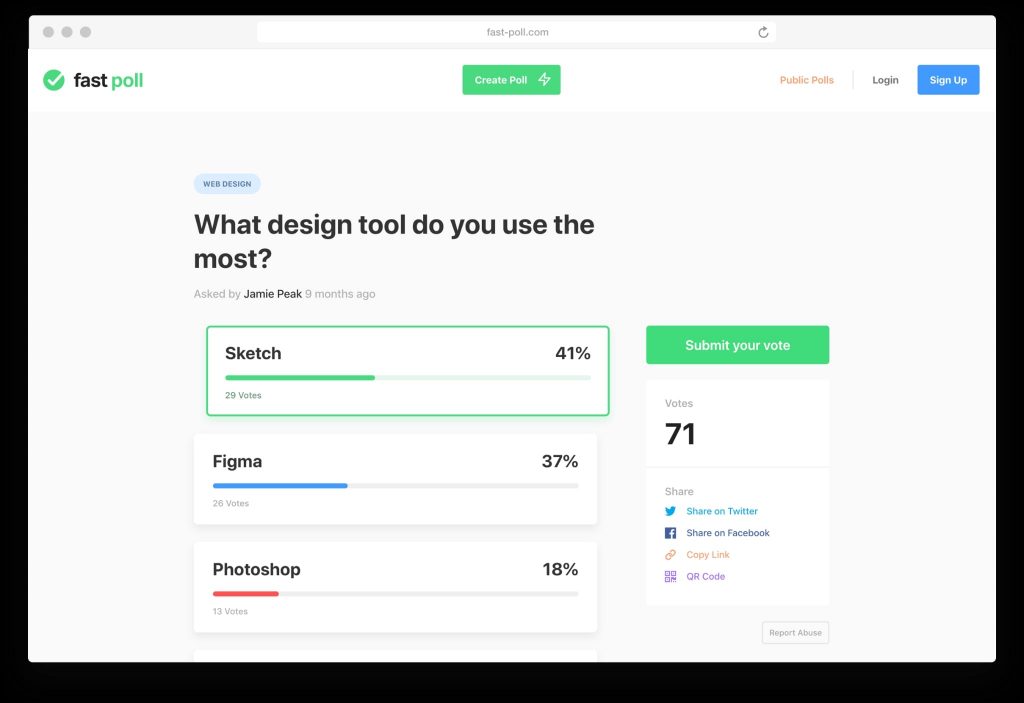
Image Source: Fast-Poll
Interactive content can also be a great way to generate user-generated content (UGC) and increase the amount of time that visitors spend on your site.
For instance, a poll or survey can generate a lot of responses, which can keep visitors on your site for longer as they read through the responses.
On top of that, you can also use interactive infographics to present information and data. They can be used to explain complex concepts, create a sense of community, and share knowledge.
Use Gamification to Improve Engagement
Gamification is a great way to improve engagement on your website or online platform.
It involves using game-like elements, such as points, badges, and leaderboards, to encourage visitors to interact with your content and take specific actions.
One of the key benefits of gamification is th-at it can make even the most mundane tasks feel more fun and engaging.
For example, instead of just asking visitors to fill out a survey, you can turn it into a game where they can earn points for each question they answer. This can make the survey feel more like a challenge and encourage more people to participate.
One real-world example of a company using gamification to improve user engagement is Duolingo, a language-learning app. The app uses gamification to make the process of learning a new language more engaging and enjoyable.
The app uses a points and leaderboard system, where users earn points for completing lessons and can compete with other users on a leaderboard.
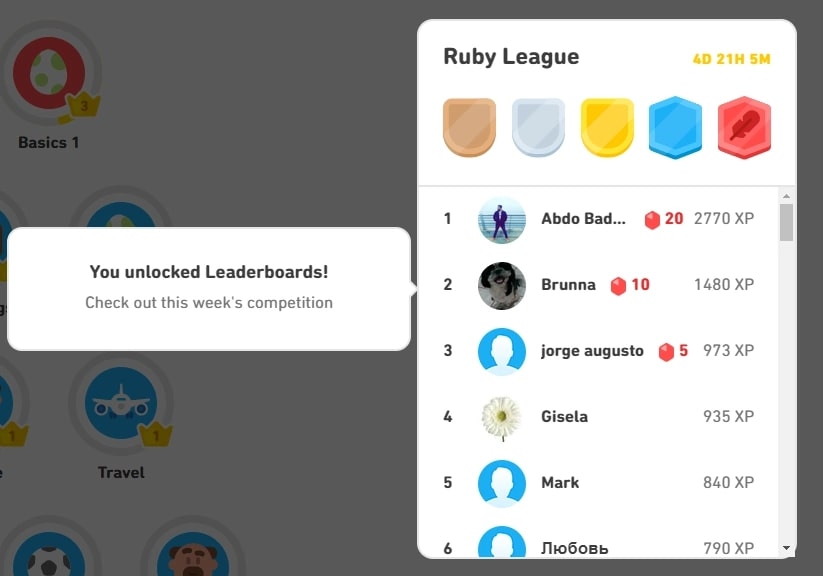
Image Source: Duolingo
The app also uses a virtual currency called “lingots,” which users can earn by completing lessons and achievements and can then use to purchase items such as virtual pets or customized avatars.

Image Source: Happilyevertravels
Duolingo presents a great example of how gamification can make the experience of learning more engaging and fun, resulting in increased retention and popularity among its users.
Use a Popup Software
Are you looking for a way to take your website or online platform to the next level in terms of engagement?
One effective strategy to improve engagement is by using popup software.
Popup software allows you to create targeted and personalized popups that can be used to capture leads, promote special offers, and encourage specific actions.
Popup software can be used to create a wide range of different types of popups, such as exit-intent popups, timed popups, and scroll-triggered popups.
This allows you to create a more personalized experience for your visitors, which can increase engagement and conversions.
There are two ways you can go about it:
- Implement exit popups and exit surveys on your website to stop visitors from leaving. Ask them the reason behind their departure to understand their needs and to capture feedback for improvement.
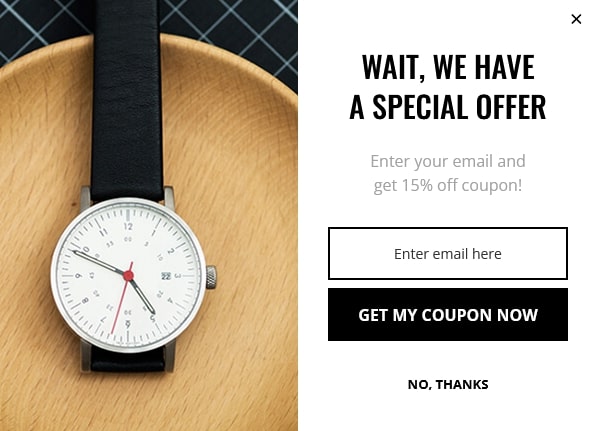
- Use targeting options smartly to display relevant and personalized messages plus offers to customers. For example, show different offers to returning customers and welcome messages with first-purchase discounts to first-time visitors.
Here, powerful popup software tools like Picreel can be used that offer a wide range of features, such as A/B testing, targeting, and personalization options.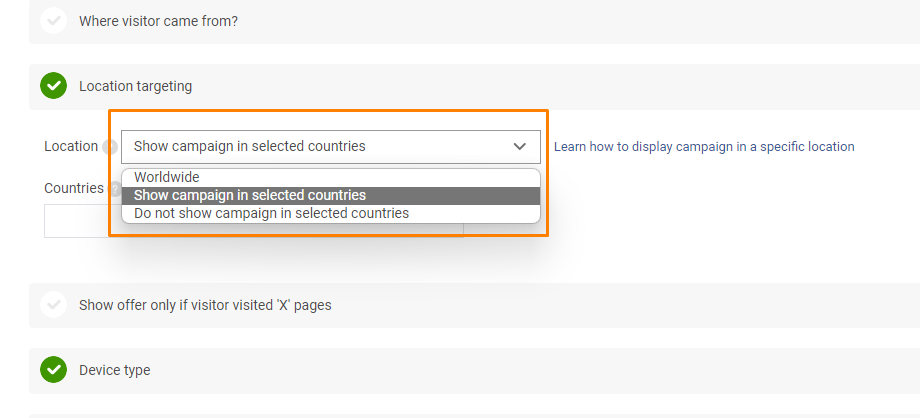
With Picreel, you can also create targeted popups that will only be shown to specific visitors based on their behavior, location, scroll percentage, and other factors. This allows you to create personalized experiences that will increase engagement and conversions.
Provide Assistance in Real Time Using Co-Browsing
Providing real-time assistance using co-browsing is a great way to improve engagement on your website.
Co-browsing is a technology that allows you to share your browser with a customer or visitor in real time. This allows you to provide assistance and support in a way that is more personal and interactive.
One of the key benefits of co-browsing is that it can help to reduce friction and improve the customer experience.
For example, if a customer is having trouble finding a product or navigating your website, you can use co-browsing to guide them through the process in real time. This can save them time and frustration, which can lead to increased engagement and satisfaction.
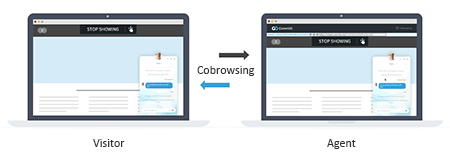
Image Source: Comm100
You can do the same for remote assistance and support as well, where if a customer is having trouble using a specific feature or function on your website, you can use co-browsing to remotely access their browser and provide assistance.
But user engagement is not the only benefit you get from assisting your users using co-browsers. Other benefits include:
- Improved customer experience
- Increased efficiency
- Reduced need for support
- Increased sales
- A better understanding of customer needs
- Increased customer loyalty
Provide Live Chat Support
Providing live chat support is something that will never stop being great in terms of increasing user engagement.
Live chat support allows you to provide real-time assistance to customers and visitors, which can help to reduce friction and improve the customer experience.
One of the key benefits of live chat support is that it allows you to provide quick and convenient assistance to customers.
For instance, if a customer has a question or concern, they can simply start a live chat and receive an immediate response. This can save them time and frustration, which can lead to increased engagement and satisfaction.
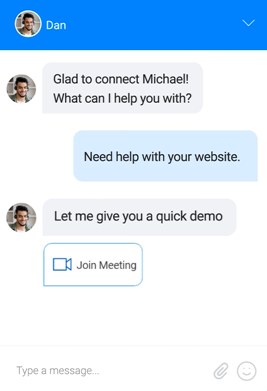
Live chat support can also be used to provide remote assistance and support, just like co-browsing. Let’s say a customer is having trouble using a specific feature or function on your website. You can use live chat to provide assistance remotely.
This can help to reduce support costs and improve the customer experience.
Here, tools like ProProfs Chat can be used to provide amazing live chat support on your website.
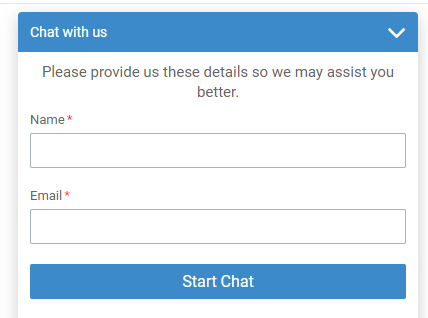
It offers a wide range of features, such as automatic greetings,pre-chat surveys, and offline messaging, which can help to improve customer experience and engagement. It also provides real-time visitor monitoring, which allows you to see who is visiting your website and provide targeted assistance.
Read More - Top 35 Website Engagement Tools to Uplift Your Business in 2025
Use an Omnichannel Approach
The customer retention rate through a strong omnichannel approach is around 89%. This is why an omnichannel approach is something you should not let go of.
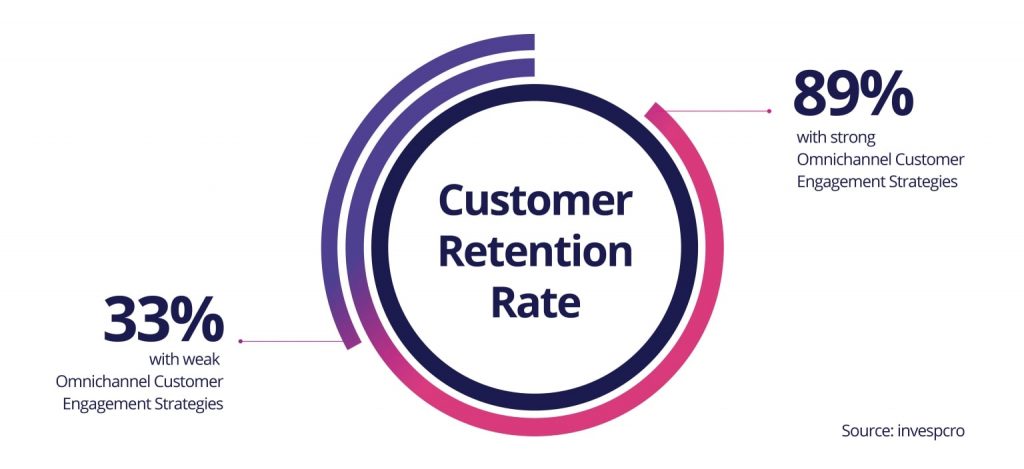
Image Source: Anchanto
The omnichannel approach is a strategy that allows you to communicate with your customers across multiple channels, such as email, social media, live chat, and phone.
This can help you to reach your customers where they are and provide them with a seamless experience.
One of the reasons why the omnichannel approach is so popular is that it allows you to provide personalized and convenient assistance to your customers.
For example, if a customer prefers to communicate through live chat, you can provide assistance through that channel. If they prefer email, you can reach out to them through email.
This allows you to meet your customers where they are, which can increase engagement and satisfaction.
Also, when you implement an omnichannel communication approach, ensure to use consistent brand messaging across all channels.
This helps engaging users communicate on different channels with ease and also lets them develop an emotional connection with your product and brand.
Collect Feedback to Find Improvement Opportunities
Collecting feedback is one of the most promising ways of improving user engagement.
Feedback allows you to understand how your customers feel about your product or service, what they like and dislike, and what they would like to see improved.
By collecting feedback, you can identify areas where you need to improve and make changes that will delight your customers and increase engagement.
One of the key benefits of collecting feedback is that it allows you to understand the customer’s perspective.
By understanding the customer’s perspective, you can make changes that will improve the customer experience and increase engagement. For example, if a customer complains about long loading times, you can work on improving the website’s speed, which can lead to increased engagement and satisfaction.
With tools like Picreel, you can easily collect on-site feedback from your customers by deploying surveys through popups.

Collecting feedback also allows you to identify new opportunities.
Let’s say a customer suggests a new feature or product in the feedback; you can consider adding it to your platform. This can help to increase engagement and attract new customers.
Doing all of the above using feedback can easily help you increase conversions and sales. When customers feel heard and valued, they are more likely to return to your platform and make a purchase.
Also Read -Popups for Feedback: Get To Know Your Customers
Cut Features That Users Do Not Engage With
One effective way to increase user engagement is to cut down on features that users do not engage with.
This may seem counterintuitive, but it’s important to remember that more is not always better.
By focusing on the features that users actually use and enjoy, you can create a more streamlined and user-friendly experience, which can lead to increased engagement.
When identifying which features to cut, it’s important to look at data and user behavior. For instance, if a certain feature is not being used as much as others, it may be a good candidate for removal.
Additionally, if engaging users are having trouble understanding or using a feature, it may be worth considering cutting it.
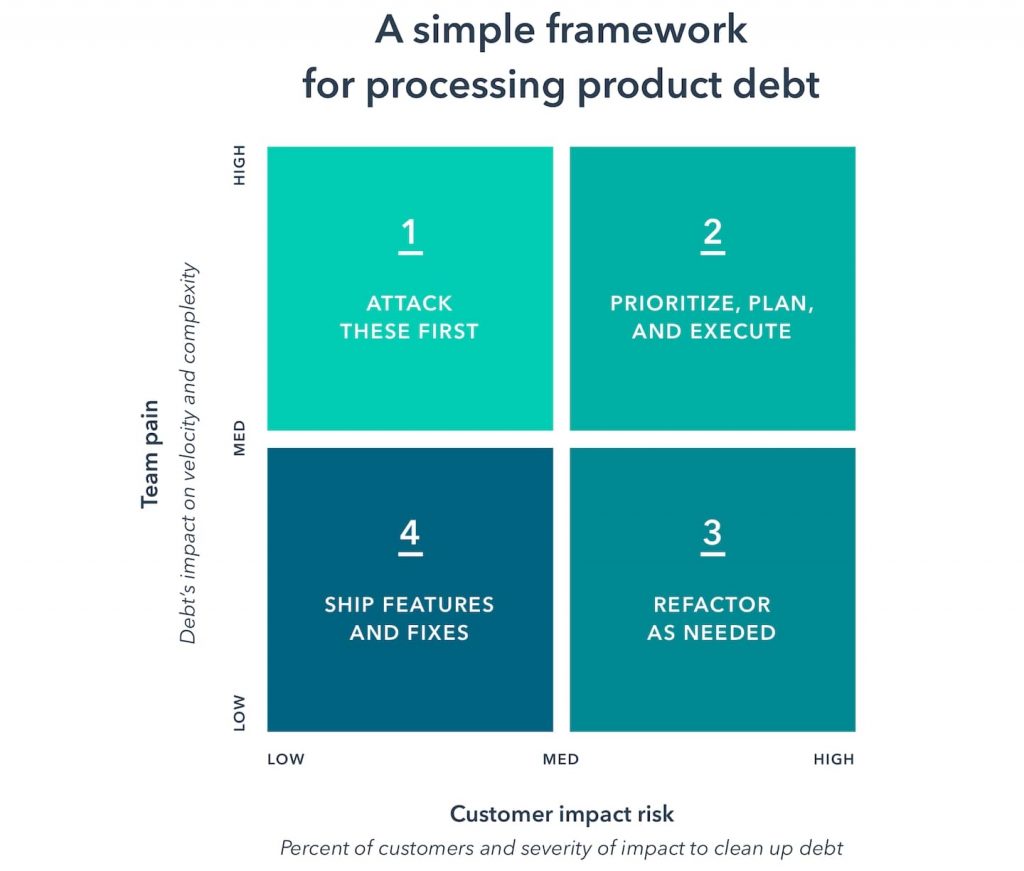
Image Source: Hubspot
By cutting unnecessary features, you can also free up resources and focus on developing the features that engaging users actually enjoy. This can help to improve the overall user experience and increase user engagement on the website.
On top of that, by cutting features that are not being used, you can also help to speed up your website or app, which can make it more responsive and improve the overall user experience, which will help increase user engagement on the website.
Use UX Writing to Deliver Effective Messaging
UX writing is an essential component of user experience design, and it plays a crucial role in increasing user engagement.
It’s the art and science of crafting user-centered messages that guide users through an interface and make their experience more seamless and enjoyable.
Imagine you’re creating a website or developing an app, and you want to guide the user to complete a certain task, like signing up for a newsletter or buying a product.
That’s where UX writing comes in.
It helps to create clear and concise messaging that directs the user toward the desired outcome.
For example, instead of a generic button that says “submit” you can use a button that says “sign up for our newsletter” which makes it clear what the user can expect after clicking the button.
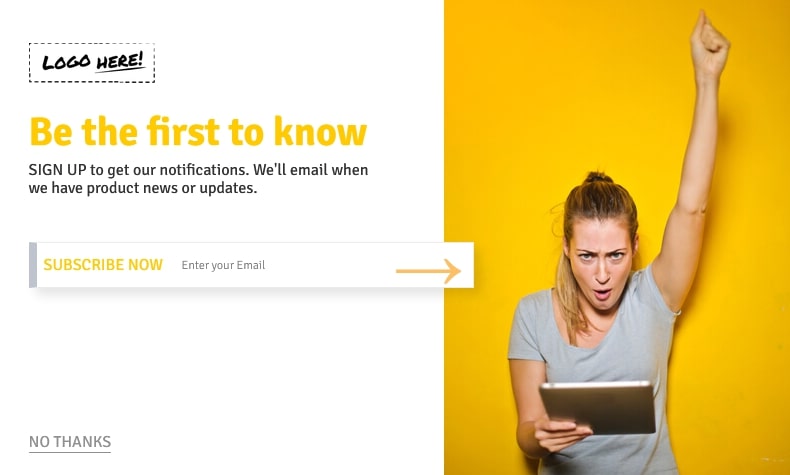
This clear messaging helps increase the user’s trust and confidence in the website or app, which in turn can increase user engagement on the website.
UX writing also helps to create a consistent tone of voice across the entire website or app, which can help to create a sense of familiarity and comfort for the user. It’s like having a conversation with a friend, it’s more engaging and easy to understand.
Improve User Engagement With the Best Tactics
At the end of the day, improving user engagement is crucial for the success of any website or app.
Whether it’s through creating interactive and engaging content, gamification, real-time assistance using co-browsing, live chat support, an omnichannel approach, collecting feedback, cutting features, or using UX writing for effective messaging, there are many tactics you can use to boost engagement.
The key is to find the right combination of tactics that work for your specific audience and to continuously analyze and optimize your approach. With the right strategy and tactics, you can create an enjoyable and satisfying user experience that keeps people coming back for more!
Also, tools like Picreel can help you supercharge these strategies using highly intuitive and interactive website popups that you can deploy within minutes. The tool comes with a 15-day free trial which you can avail to try the tool for yourself before making any commitments.
 Tips
Tips
We’d love to hear your tips & suggestions on this article!
FREE. All Features. FOREVER!
Try our Forever FREE account with all premium features!

 We'd love your feedback!
We'd love your feedback! Thanks for your feedback!
Thanks for your feedback!







